- News
- Reviews
- Bikes
- Accessories
- Accessories - misc
- Computer mounts
- Bags
- Bar ends
- Bike bags & cases
- Bottle cages
- Bottles
- Cameras
- Car racks
- Child seats
- Computers
- Glasses
- GPS units
- Helmets
- Lights - front
- Lights - rear
- Lights - sets
- Locks
- Mirrors
- Mudguards
- Racks
- Pumps & CO2 inflators
- Puncture kits
- Reflectives
- Smart watches
- Stands and racks
- Trailers
- Clothing
- Components
- Bar tape & grips
- Bottom brackets
- Brake & gear cables
- Brake & STI levers
- Brake pads & spares
- Brakes
- Cassettes & freewheels
- Chains
- Chainsets & chainrings
- Derailleurs - front
- Derailleurs - rear
- Forks
- Gear levers & shifters
- Groupsets
- Handlebars & extensions
- Headsets
- Hubs
- Inner tubes
- Pedals
- Quick releases & skewers
- Saddles
- Seatposts
- Stems
- Wheels
- Tyres
- Health, fitness and nutrition
- Tools and workshop
- Miscellaneous
- Cross country mountain bikes
- Tubeless valves
- Buyers Guides
- Features
- Forum
- Recommends
- Podcast
review
£169.99
VERDICT:
Well ventilated, fast feeling, comfortable, lightweight aero lid that looks pretty cool too
Weight:
215g
Contact:
At road.cc every product is thoroughly tested for as long as it takes to get a proper insight into how well it works. Our reviewers are experienced cyclists that we trust to be objective. While we strive to ensure that opinions expressed are backed up by facts, reviews are by their nature an informed opinion, not a definitive verdict. We don't intentionally try to break anything (except locks) but we do try to look for weak points in any design. The overall score is not just an average of the other scores: it reflects both a product's function and value – with value determined by how a product compares with items of similar spec, quality, and price.
What the road.cc scores meanGood scores are more common than bad, because fortunately good products are more common than bad.
- Exceptional
- Excellent
- Very Good
- Good
- Quite good
- Average
- Not so good
- Poor
- Bad
- Appalling
Aerodynamics are important in a bike race and we're seeing the pros concentrating on cheating the wind from every direction, head to toe. 'The fastest closed aero helmet' claims Met about its brand new Manta; a big claim but this helmet is about more than just going fast.
The Manta was launched last year at the Tour de France after the Met sponsored team MTN Qhubeka's sprinters asked for 'an extremely lightweight aero helmet', and this is what they got.
It's a sleek-looking thing with its near-solid shell and compared to some aero helmets on the market surprisingly svelte.
Met claims the Manta saves 10 watts at 50km/h compared to its rivals and although that is hard to test in the real world even half of that isn't to be sniffed at for free. That'll be at an optimal position too, most likely the handlebar-staring, stem-chomping head angle employed by the world's best sprinters but hey, when you're really going for it in the drops the Manta does actually make you feel quick – nothing wrong with a placebo effect.
For the rest of the stage though those sprinters are going to need a helmet which isn't going to make you cook in the summer heat and it's here that the Manta really excels. It may only have seven forward facing vents but boy do they keep you cool as they direct the air in and around your head.
I wore the Manta on a 107 mile ride which took in 2,800m of climbing on a day that saw the thermometer touching 25°C and while I was hot I wasn't excessively so in the Met. It performed just like any other vented helmet.
The wind seems to rush into those two middle vents, so much so it could do with some bug mesh as you can feel the little critters getting sucked in there. The scoop on the top whips cool air in too over the top of your head and out of the six large vents at the rear.
It's the most breathable aero helmet I've worn.
I'm not a big helmet wearer and leaving the whole 'should I, shouldn't I' debate alone I just prefer to wear a cap (road.cc obviously) for comfort.
The Manta has changed all that though, I literally grab it every single ride because it's so damn comfortable. It uses Met's Safe-T Advanced Fit System which runs right the way around the helmet rather than just the back portion. Each click of the dial gives you 2mm of adjustment and the load is spread evenly rather than just focussed on one spot. At the rear of the cradle you get four step options to get that sitting right too.
You get removable foam padding inside which is plush enough but I'd be tempted to go for the optional gel padding (as found in the Met Stradivarius) for optimum comfort.
The straps are called Airlite which Met claim are 15% lighter and more aerodynamic than standard straps, I can't see how or why to be honest but they are comfortable against the skin and easily adjustable.
While we're on the subject of weight it's worth mentioning the Manta is just 215g which is impressive for a helmet of its type and you certainly notice it when you're riding – or rather you don't, if you know what I mean.
Value for money is tough one. A lot of cheaper helmets often do the same job as more expensive models. They pass the same tests; have the same number of vents and so on. But road cycling has, and always will be driven by fashion and what the pros are wearing. If you want to look like them then you'll to pay a premium.
Compared to its rivals, the Met Manta isn't actually badly priced and for me its comfort, light weight and cool looks make it worth every penny.
Our test sample came with a little Met LED light which fits over the rear adjustment dial and it was surprisingly bright for such a small component. With a simple push on for flashing, push again for solid and once more for off it's a simple little 'be seen' option.
Overall the Met Manta is a great helmet if you want to go down the aerodynamic route.
Verdict
Well ventilated, fast feeling, comfortable, lightweight aero lid that looks pretty cool too
road.cc test report
Make and model: Met Manta Helmet
Size tested: Medium 54/58, Black/Blue/Green, includes a soft bag and spare gel front pad
Tell us what the product is for, and who it's aimed at. What do the manufacturers say about it? How does that compare to your own feelings about it?
According to Met the Manta is the "Fastest closed aero road helmet."
Even if that isn't true (it might be) it's very light, comfortable and adjustable.
Tell us some more about the technical aspects of the product?
Outer shell construction: Integral inmoulding
EPS liner technology: Inmolding EPS intelligent fusion
Chin strap buckle: Anti-pinch buckle
Straps: Air lite straps
Cam divider: 2016 air lite divider
Strap anchor points: Aerodynamic strap anchor design
Retention system: Safe-t advanced, 360 degrees
Padding: Coolmax anti-allergenic interior pads. Front Gel O2 padding supplied as a spare
Be seen Reflective rear stickers
Transport: Soft bag provided with the Manta for safe transportation.
Sizing:
Medium: 54cm to 58cm
Large: 59cm to 62cm
Rate the product for quality of construction:
8/10
There is nothing to really fault in its construction but I do prefer helmets wher the outer shell extends around the lower edge of the foam to prevent damage.
Rate the product for performance:
9/10
It's hard to quantify Met's aero claims but one this is for sure, the Manta is surprisingly cool for a closed helmet considering it has only seven forward facing vents so the channels must be working well.
Rate the product for durability:
7/10
The straps and retention system all feel pretty rugged with the only downside being the matt finish on the aero section marks easily making the Manta look tatty quite quickly.
Rate the product for weight (if applicable)
8/10
Pretty light for an aero helmet.
Rate the product for comfort (if applicable)
9/10
Subjective as helmets are very personally but I found the Manta a match made in heaven.
Rate the product for value:
6/10
For the level of performance, comfort and weight against it's rivals I say the Manta's price is justifiable.
Tell us how the product performed overall when used for its designed purpose
Excellently. You remain cool, you feel fast and it's so comfortable.
Tell us what you particularly liked about the product
The fit.
Tell us what you particularly disliked about the product
Marks easily.
Did you enjoy using the product? yes
Would you consider buying the product? yes
Would you recommend the product to a friend? yes
Use this box to explain your score
I grab the Manta every ride, and that's coming from a non-helmet wearer - 'nuf said I reckon.
About the tester
Age: 37
I usually ride: This month's test bike My best bike is: Mason Definition
I've been riding for: 10-20 years I ride: Every day I would class myself as: Expert
I regularly do the following types of riding: time trialling, commuting, club rides, sportives, fixed/singlespeed,
Since writing his first bike review for road.cc back in early 2009 senior product reviewer Stu has tested more than a thousand pieces of kit, and hundreds of bikes.
With an HND in mechanical engineering and previous roles as a CNC programmer/machinist, draughtsman and development engineer (working in new product design) Stu understands what it takes to bring a product to market. A mix of that knowledge combined with his love of road and gravel cycling puts him in the ideal position to put the latest kit through its paces.
He first made the switch to road cycling in 1999, primarily for fitness, but it didn’t take long for his competitive side to take over which led to around ten years as a time triallist and some pretty decent results. These days though riding is more about escapism, keeping the weight off and just enjoying the fact that he gets to ride the latest technology as part of his day job.
Latest Comments
- brooksby 1 hour 22 min ago
Or even better: make driving licences weight-restricted. AIUI you have to take a different test to be able to drive a minibus or a LGV or a HGV....
- NPlus1Bikelights 2 hours 1 min ago
I think buying anything off Covert Instruments would equate to going equipped over here.
- David9694 2 hours 35 min ago
Cromwell Road parking 'nightmare' next to Dorchester South...
- Sredlums 3 hours 8 min ago
I tried, but I just cannot in earnest believe that this question is sincere.
- Doctor Fegg 4 hours 19 min ago
Ah, British Cycling and the UCI. It's hard to think of two more universally beloved organisations. Thames Water and the National Rifle Association...
- David9694 4 hours 55 min ago
Car hits stone wall and overturns in smash outside Wiltshire pub...
- wtjs 5 hours 51 min ago
We get these 'high action rate' claims all the time, with little or no evidence of what the action was. People are, of course, entitled to consider...
- Bungle_52 6 hours 5 min ago
Thank you. Can't say I've ever seen one but I will keep a lookout in future.
- chrisonabike 6 hours 6 min ago
Part of me hopes they don't waste the money. If past performance is any guide poor resurfacing (particularly around utility access points), "works...
- SimoninSpalding 8 hours 39 min ago
I have Cors N:ext on my summer bike, mainly because they do a 24mm, 25 is REALLY tight on rear brake clearance. I am not impressed with how the...




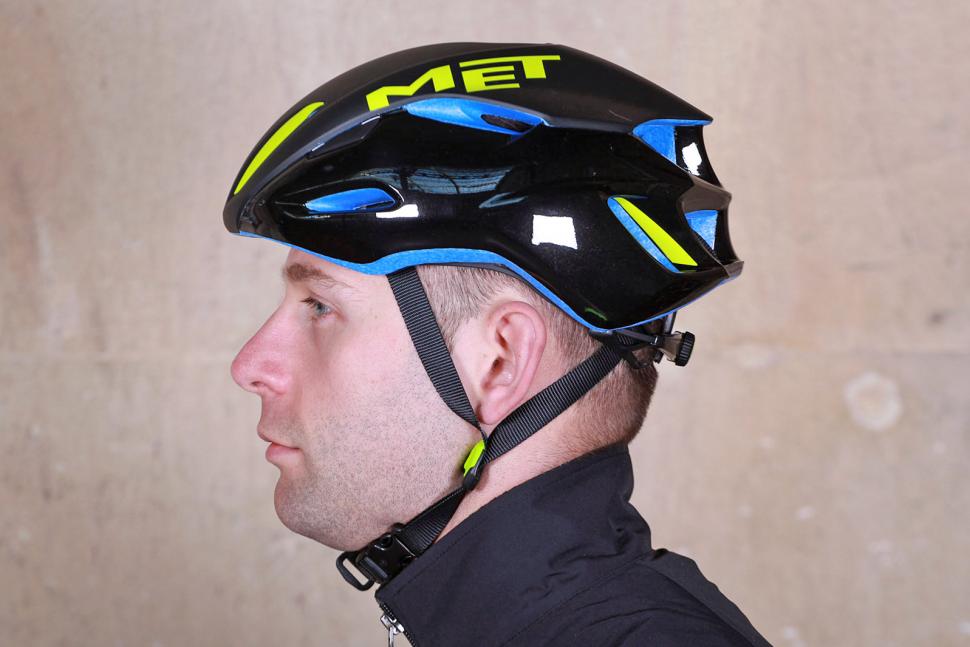

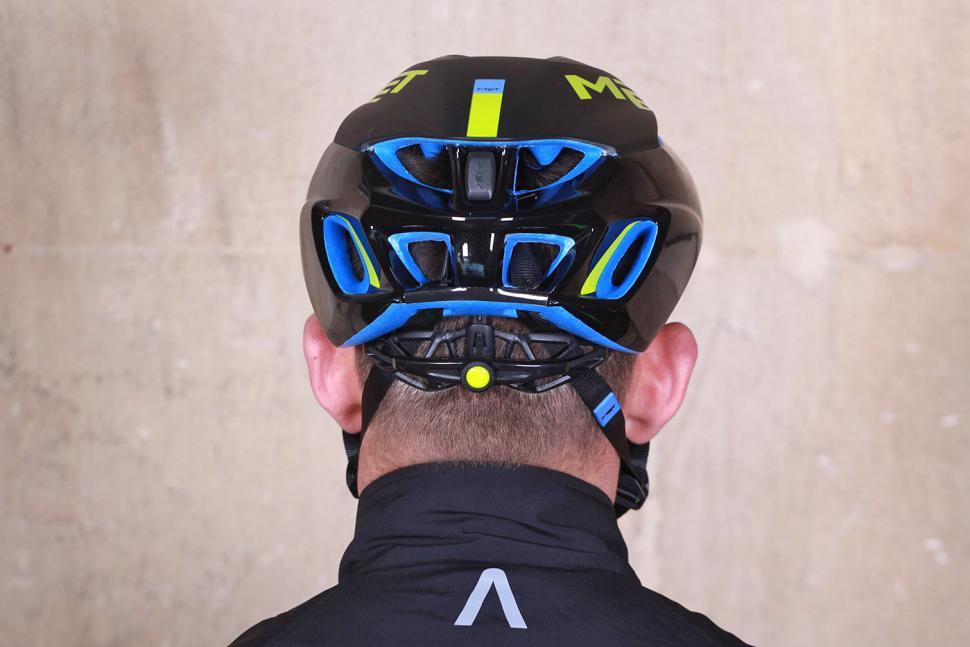

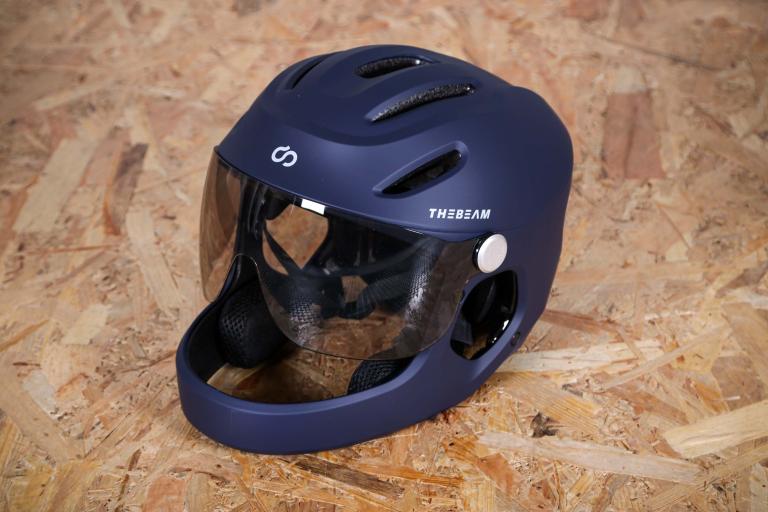
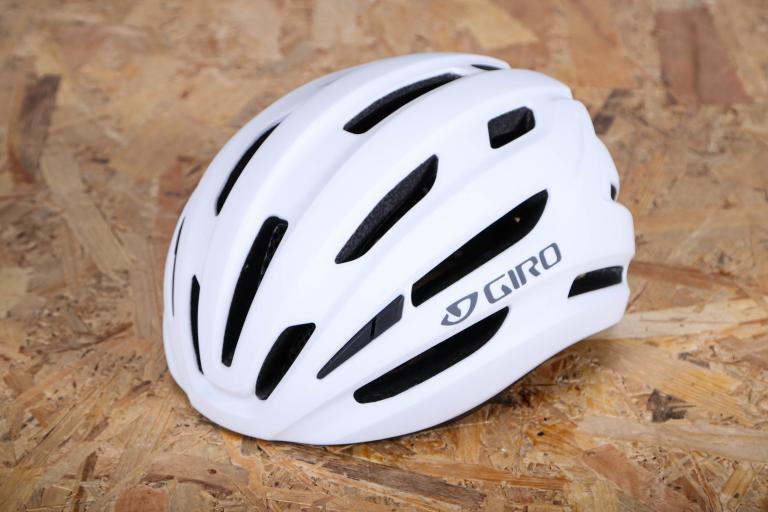
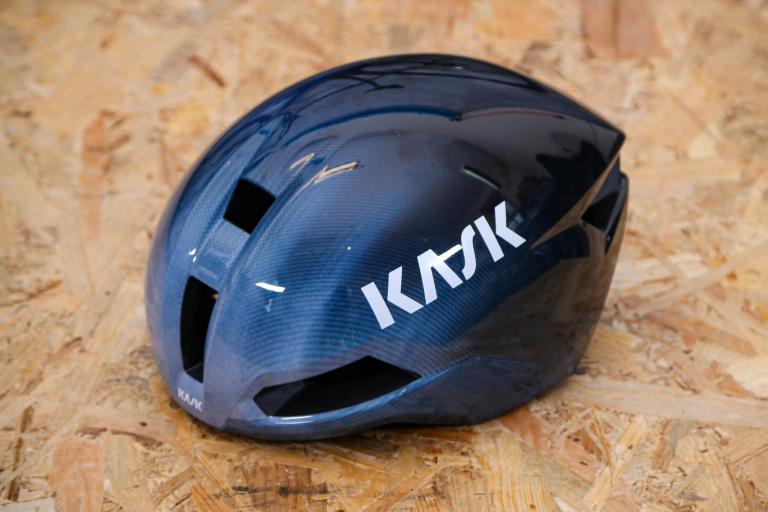
Add new comment
29 comments
Disappointed by the quality of the helmet supposed to be a top level helmet : the shell is not well molded, the fit isn't straight.
No answer from the MET customer service.
An expensive helmet missing quality ...
met.jpg
It's a business. Business and marketing are intrinsically linked. Cycling wasn't first to start a new year/new model routine and personally don't reckon they're the worst. In the end, it's up to you whether to put your hand in your pocket or not, don't see anything particularly insidious about the marketing of things like aero helmets - they seem quite open about the information and the sort of person might be of benefit to (e.g. triathletes, road-racers, time triallists) may well also be the sort of person to ignore any bull shit and make an informed decision.
Not necessarily doubting you, but curious as to what you think was, as my reading and research (piqued by Robert Penn mentioning it in 'It's All About the Bike') had this planned obsolescence as being part of the cycle industry's history prior to 1900 in the US, but often wrongly credited to the car industry, as my [mis]education in product design had me believe some 20+ years ago.
I thought it was washing machines!
Or some other domestic applicance. Not sure where I picked that up from.. some documentary maybe years ago.
Fashion would be the archetypal example IMO, followed by the usual example of light bulbs - but your reference to planned obsolesence in the cycle industry prior to 1900 (really ?) has also piqued my interest - i'll have a look at that, thanks. As far as I can see it's a fairly common theme for many goods though, so i'm unsure how we'd say this or that was definitively the first, jolly interesting all the same.
It's not my business what anyone spends money on.
My gripe is with marketers flooding consumers with real but IRRELEVANT (to most) numbers and implying that their products offer certain benefits while they actually don't.
I'm actually with you on this one, and perhaps over-simplifying, but cycling and marketing are intrinsically linked: it was the cycling industry that gave us the 'new model every year' business model, new models which of course need justifying to consumers with at times dubious marketing claims.
None of us have to listen to these claims mind—we just choose to when we feel like justifying an n+1 purchase
Aren't there any stretchy aero helmet covers that fit a range of helmets?
Yes
http://www.tredz.co.uk/.BBB-HelmetShield-Sillicone-Helmet-Cover_78243.ht...
Nice, going to give that a shot. On pre-order but I'm sure it's available somewhere. I do feel the wind tugging on my helmet, so reckon a cover would be ace.
I have the Rivale, the more-vented version, because the last aero lid I had was fully enclosed and I nearly drowned in sweat everytime I took it out. Met make great helmets, and I slightly regret not paying the extra for the Manta; this review now confirming that.
Bought one, very light helmet, no so much "dome-shape" helmet and most importantly, I lives with hot weather around 35 C and this helmet still able to cool my head effectively.
Faster? I dunno but I obvious felt "faster" of course. Its the first aero helmet I ever use since my last one was broken from car accident.
Pleased to see you've converted to wearing a helmet. £170 might not be cheap but it's no more than a pair of top quality bibs. Why anyone wouldn't wear a modern helmet is beyond me: 215gms that might save your life.
Don't move, their vision is based on movement.
Another test at 50km/h... of the kit that will be sold almost entirely to people averaging 16-20mph...
This cynical and manipulative marketing BS is getting more and more irritating...
Some serious weekend warriors will obviously be able to "feel" e difference though, just like with aero wheels
You stick with your steel frame, cloth bar tape, toe clips and seven speed groupset.
I have no idea why it matters to you what I ride in a context of this discussion but for the record
my Columbus SLX steel road bike has 55mm carbon rims, single narrow wide 44T ring, 11-25 10speed cassette (that takes me up every climb btw) tubeless tyres and MTB clipless pedals...
This spec will probably make your brain explode. Make sure you turn it off and on again on Monday morning
.
Thing about these aero claims of x watts saved at y speed is that most of us only hit the speeds quoted on downhills. A curve of watts saved vs speed would be more useful, but would probably only show that at my full gas flat road speed of ~30kph it'd be basically no watts saved for my £169.99
Oh here we go again...
1) relative velocity
2) that's really not how the saving works
Aero benefits slower riders just the same as faster riders. Faster riders are going faster (obviously), but they spend less time riding compared to slower riders. The difference in the speed is balanced out by the time on the road. In fact, the slower riders tend to benefit more!
http://road.cc/content/feature/171932-three-things-i-learned-wind-tunnel
Using this twisted logic, will a granny on Raleigh shopper benefit ever more because she's going to spend 3 hours covering 25 miles?
Seriously guys, due to the nature of air resistance, the difference at 28mph (typically used in wind tunnel test) will be the whole magnitude greater than at 18-20mph. A slower rider will obviously spend more time riding the same distance but in percentage terms the improvements will be tiny to undetectable considering that a body still accounts for 80-90% of total drag. Also for a slower ridern aero drag will matter less in relative terms comparing to gravity and rolling resistance...
If anyone wants to prove me wrong, please le me know if you ever come across any INDEPENDENT test/research with an average build (not skinny) bloke riding at around 20mph in a NOT so perfect position, with bottles, full jersey pockets or saddle bag, computer, rear light etc, in another words the test reflecting exactly the reality of the overwhelming majority of road cyclists.
You can't just make assumptions and extrapolate numbers from unrealistic perfect scenarios.
Are you saying that riders doing 18 to 20 mph shouldn't use aero gear?
Obviously people should wear whatever they like. But marketing based on watts saved at 30mph is not relevent to people travelling at half or two thirds of that. Of course if I am riding at 15kph into a 15kph headwind relative wind speed leads to the same benefits. But how often does that happen?
Most of us are always riding into the wind, at different speeds and at different wind speeds and angles.
Surely you should be saying that aero benefits vary over a ride, from minimal to quite good? There is never a point where there is no benefit, surely, if weighs are constant.
It is hard to know where the benefit lies for someone wanting to spend on their sport when it comes to weight v aero though. I'm still not certain there. A kilo of weight means something to me, I can see it on Strava times. With aero gear, I'm not sure. I don't own enough to know if it's suitable for an average guy like me. I agree with you that the marketing is over the top, but generally speaking people should dress aerodynamically at least and choose parts in terms of aerodynamics if weighs are the same.
It only feels like we are always riding into the wind. Not denying there are benefits, but they are probably about half the watts figures claimed for regulate people at regular speeds.
But what are you basing your views on? Years of assumptions backed up by marketing (not directly telling us but giving the impression) that make us think that aero equals speed, and therefore you must have speed to need to be bothered about aero.
I'm sure you will have been told by some experienced guy when you were starting out, or read somehwere, or told some inexperienced person yourself to ditch the baggy clothing and get some lycra cause it will make you faster!
Perhaps you should change your thinking to aero equals efficiency, and then all of sudden you'll see that it does apply to everyone. Instead maybe you should be telling the inexperienced to get the lycra on because it will make it easier!
Swiss side are not the only ones to suggest that slower riders benefit as much from aero as faster riders. In fact I've seen a few test results where the improvements were stated as time saved over a given distance (I think Specialized were one), because regardless of the speed you are going, you would save the same amount of time. Yes, the slower rider might not care quite as much due to the gains being smaller as a percentage of their overall ride time compared to a faster rider, but that doesn't mean it's not important or something to be ignored.
My view here is not whether aero has an impact on every rider, but instead a question of importance, what compromises elsewhere getting more aero might create, and how much it's sensible to spend doing it. On these points, it's down to individuals to decide for themselves.
Thinking to switch to a more aero helmet, but really not sure if I can trust the aero claims from the manufacturers. Using a Giro Prolight at the moment. The good thing about going light is you can verify the weight, not so easy to verify aerodynamics.
I'm not entirely sure why, but a lot of the shots of people modelling helmets on this web site remind me of those poor seals onto whose heads scientists have glued transmitters. Not intending to be insulting, just an observation.